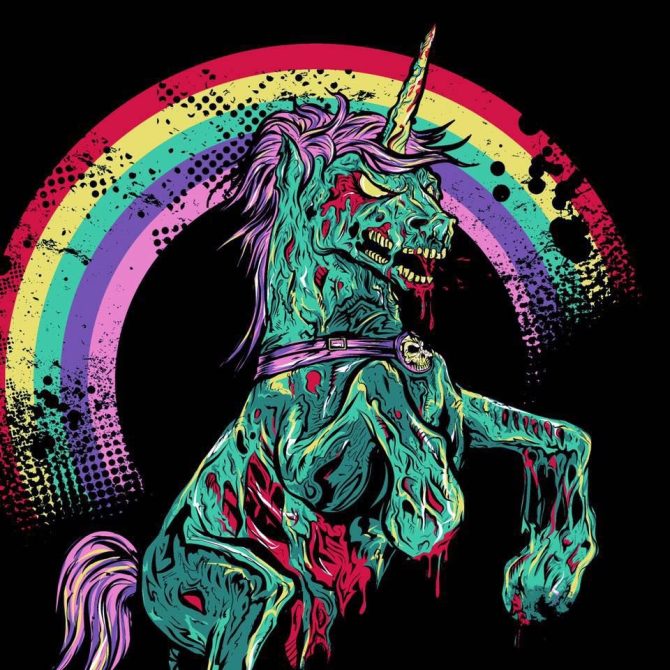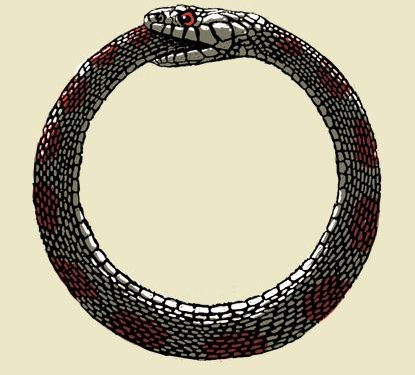This story was originally posted by the Mises Institute
Dusty Wunderlich | Published March 3, 2024
There is a grand economic fable that has been unfolding over the past two decades, one filled with mythical creatures and great fantasy. The main character of this fable is the grand wizard of the markets, The Federal Reserve. Like all great fables, it starts with magic. Over the last twenty years, the grand wizard of the markets magically created over $7 Trillion dollars by cheating time through the spell of negative real interest rates. This magic fueled the creation of new economic creatures, the worst type of creatures, unicorns and zombies. As these new economic creatures fed on the magical money, they pushed out the real creatures from their fantasy land.
In 2013, venture capitalist Aileen Lee coined the term “unicorn” for any start-up company with $1 Billion valuation or greater. Unicorns are mythical and rare creatures that don’t exist, like the profitability of the businesses that were given the rare title.
One such unicorn just made headlines and illustrates the nature of this mythical creature. 23andMe, the sexy genetic testing company, that at its heights was valued at $6 Billion is trading under $1 and will likely be delisted soon. There is no profitability in sight and the company will be out of cash by 2025. This unicorn promised to change the world but ultimately misallocated billions of dollars in resources. Their mythical story was never rooted in reality and eventually the market got tired of that story when profits never came.
A similar unicorn story unfolded with WeWork throughout the last decade. A company once valued at $47 Billion eventually found its way to a bankruptcy filing last year. Another great story that never even came remotely close to being a viable business model. While WeWork was changing the consciousness of the world, the transportation start-up, Uber, spent billions of dollars promising to change the transportation industry which eventually produced prices far exceeding a typical taxi fare and with no profitability.
In the worst Unicorn cases, we saw outright fraud. FTX and Theranos were two Unicorns celebrated by celebrities and financial elites alike. As their faces were adorned on magazine covers their businesses were being built on a house of cards. Outright fraud was always a logical and likely outcome while living within a fantasy world.
As unicorns ran free and wild feeding off low interest rates and loose monetary policy another fan favorite creature was expanding rapidly in the market, zombies. The term zombie represents a company that cannot cover debt interest payments with profits. Zombies feed off debt to remain alive and thrive in environments when the cost of debt is low. By 2016, the Organization for Economic Cooperation & Development found that 10% of firms were unable to cover their debt expense from profits, the OCED’s definition for zombie. Zombies were expanding in the low interest rate fantasy land.
Unicorns and zombies also create a Gresham’s Law effect in the economy. Gresham’s law states that bad money chases good money out of the market. Like bad money, zombies and unicorns push out good companies from investment and quality talent, thus, compounding the economic impact.
As the financial elites continue to misallocate billions of dollars and resources into the unicorn and zombie economy, the true economic engine of the American economy, small business, continues to slowly produce through the tenants of reality.
Small to medium size businesses are the tortoise in the race against the unicorn and zombie, slowly and methodically allocating resources to deliver a good product to their customers. Unlike the unicorn and the zombie, the tortoise weathers the elements and continues to deliver results for the market. These businesses are not sexy and typically not celebrated but these responsible actors and everyday grinders are the heart and soul of the American economy. Their humble efforts are the reason we have a hot cup of coffee, a repaired vehicle, and quality clothing.
The tortoise is not fueled by low interest rates, loose monetary policy, and speculation. They live and die by the profit calculation which gives them direct feedback on whether they are delivering the right product at the right price to their customers. There is no room for them to fall into the unicorn and zombie trap. In a way, their humble economic status has been a blessing in disguise, keeping them from being infected by the fantasy and illogical thinking.
The real tragedy in this fable of zombies and unicorns is not the monetary waste which was always a result of fantasy money, it is the misuse of human skills and the attempt to cheat time. We have taken some of the greatest minds in the world and put their time and talents towards fruitless efforts. Time and resources truly squandered. This is the real consequence of the economic fantasy created by the whims of the grand wizard.
Thankfully, this wizard (the Federal Reserve) has backed itself into a corner, forcing the institution to accept the reality of time and interest. As interest rates rise it is leaving a trail of unicorns and zombies in its wake – all while the tortoise continues to drive economic progress forward.
Drawing upon the insights of Nassim Taleb’s “Antifragile,” we are reminded of the pivotal role time plays in the economic landscape. Taleb masterfully articulates that becoming antifragile is not merely about surviving; it is about thriving and gaining from obstacles over time. This concept is especially relevant as we observe the noxious infestation of these zombies and unicorns in the market. These entities, born from attempts to outpace the natural rhythm of economic evolution, epitomize the folly of seeking shortcuts in the unforgiving realm of time.
This is in stark contrast to the tortoise, who not only embodies resilience, but grows stronger by enduring the shock and stress of time. As Taleb explains, it is through enduring the vicissitudes of time that entities, whether individuals, organizations, or entire economies, develop resilience and the capacity to emerge stronger from disruptions – just like the tortoise.
As we witness the inevitable unraveling of these temporal beasts in the marketplace, it seems inevitable that new species of zombies and unicorns will continue to emerge as bad economic actors. These future entities, likely spurred by the financial elite’s continuous quest to defy temporal constraints, will also have to confront the immutable laws of time. However, if Taleb’s insights hold true, those that embody the antifragile principle—gaining strength from stressors and shocks—will ultimately prevail. It would behoove them to observe the humble tortoise.
In conclusion, is not the swift but the adaptable, not the ostensibly powerful but the intrinsically antifragile, that will endure and flourish. The narrative of the tortoise and the hare extends beyond fable into the very fabric of economic evolution, underscoring the virtue of resilience and the ultimate triumph of enduring antifragility over the illusion and temptation of quick gains.

